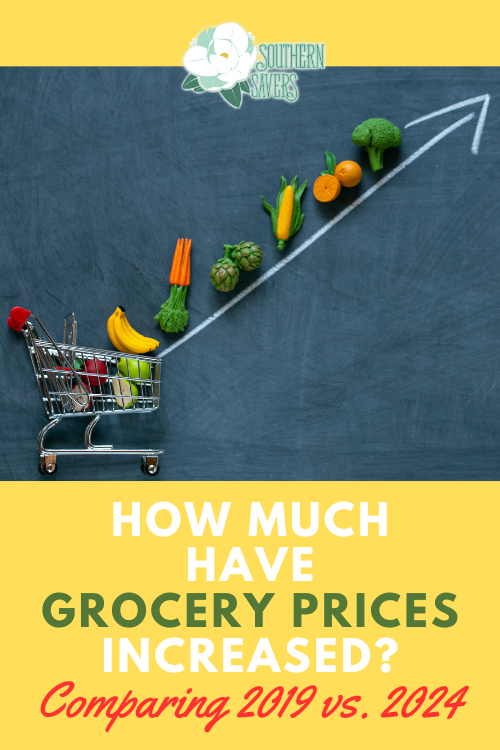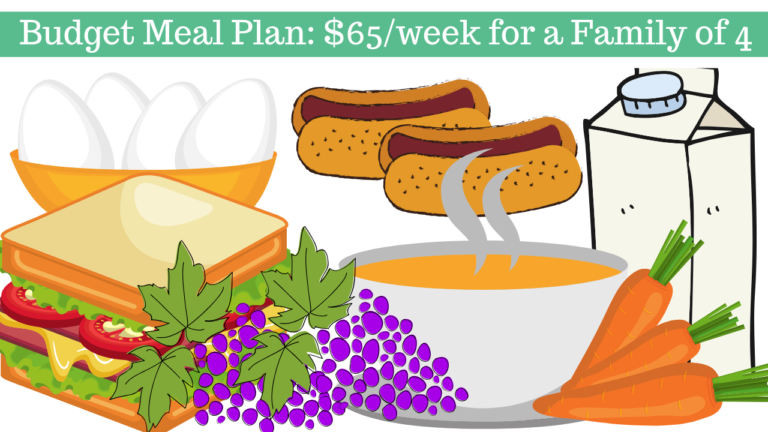This post may contain affiliate links. Read our disclosure here.
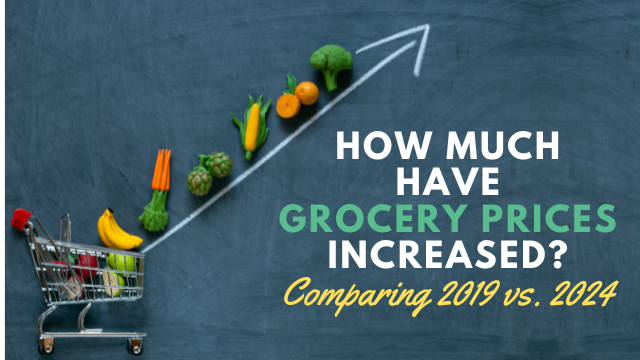
Back in 2019, I came up with a budget meal plan for a week’s worth of meals—breakfast, lunch, and dinner—that you could buy for $65. That’s 21 meals for 4 people, which works out to about 75¢/person for each meal. The menu for the week is bare bones, but it is nutritionally dense and will keep your bellies full.
I got to wondering how well that post has aged. We all experienced grocery prices beginning to rise in 2020 during the pandemic, and inflation has continued to raise the cost. In 5 years, we’d all expect things to cost a bit more, but I wanted to find out how much more! So I pulled up that old post and started looking up prices to answer the question: How much have grocery prices increased?
How Much Have Grocery Prices Increased? Comparing 2019 vs. 2024
To see the full menu, check out the original post: Budget Meal Plan: $65/Week for a Family of 4. The post includes a shopping list and a printable version of the menu.
How did you calculate the prices?
For the items on this list, I used the cheapest price I could find by using coupons, or shopping at Aldi or Walmart—whichever price was the lowest.
Depending on where you live, you may be able to find these items for cheaper than I did, but the amounts listed are a pretty good average for prices across the country.
To figure out the price difference (either a percentage increase or decrease), I did round up or down just to make things easier.

What was the overall difference between the two years?
By adding up the prices from 2019 and the prices from 2024 for the same items, it would take $92 today to buy the same items that only cost about $64 in 2019. This is an overall percentage increase of almost 44%!
Inflation overall has not been that high—the Bureau of Labor Statistics calculates inflation has gone up about 15-17% since 2019. But food prices can change a lot, and it was interesting to see what prices went up and what went down.

How did individual items compare in price from 2019 to 2024?
Here’s the ultimate breakdown. I have highlighted the percentage changes as green (the price went down) or red (the price went up).
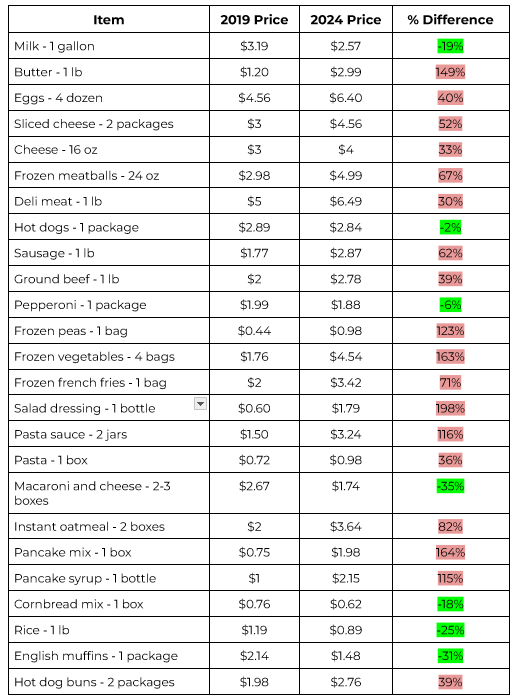
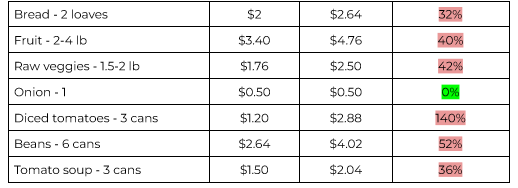
What changes were there?
Macaroni and cheese, English muffins, rice, milk, cornbread mix, pepperoni, hot dogs, and onions all went down or stayed about the same.
Everything else went up in price substantially. Pancake syrup, pasta sauce, frozen peas, diced tomatoes, butter, frozen vegetables, pancake mix, and salad dressing all more than doubled in price.

What does this mean for the average grocery shopper?
I did this comparison out of curiosity, but I still think it’s helpful. While it’s no fun for prices to have gone up so much, it might ease some of your anxiety to know that you’re not crazy for feeling overwhelmed. Food is a necessity, and we can’t always control how much we spend.
But if your income hasn’t gone up at the same rate as inflation, you might be struggling. My best advice is to keep following the Southern Savers principles.
Here are some other posts:
How Much Should I Spend on Groceries in 2023?
Save 50 Percent on Groceries without Cutting Coupons
Tips for Saving More in Groceries
